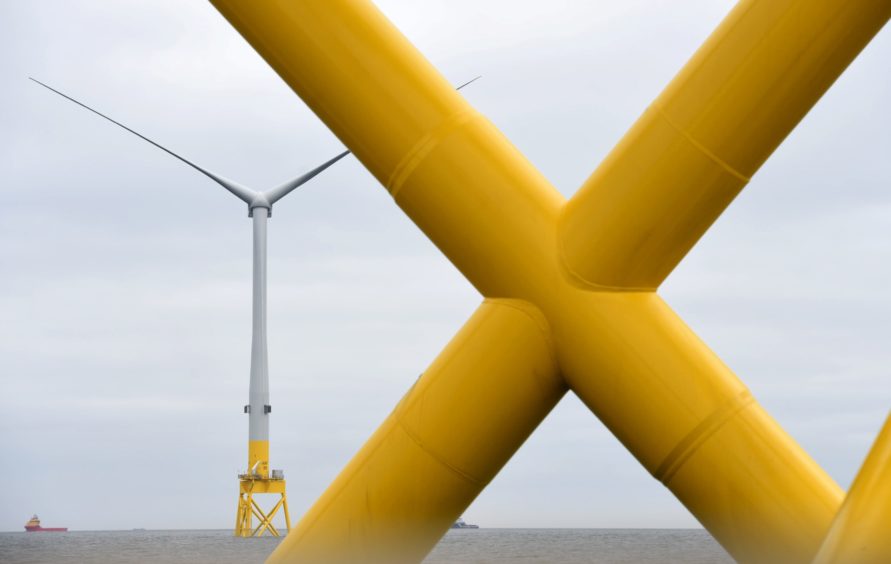
It’s several decades since I first wrote about the Crown Estate and its enormously influential hold over Scotland’s coastal waters. At that time, it was a virtually unknown subject. Today, it is more relevant than ever.
The extraordinary powers of the Crown Estate became apparent when they started handing out fish farming licences to companies in the 1980s without consulting anyone. People whose families had lived beside west coast lochs for generations suddenly found the seabed had been leased to a multinational company.
One of the reasons nobody was holding the Crown Estate to account was that it was actually illegal to do so. Under the quite extraordinary Crown Estate Act of 1961, it was an offence “to inquire as to the extent of the Commissioners’ authority or the observance of any restriction on the exercise of their powers”.
The campaign to make this organisation accountable to coastal communities has been going on ever since and there has certainly been progress. The Smith Commission recommended that the revenues and assets of the Crown Estate in Scotland should be devolved and the UK Treasury acted upon this. The legislation took full effect in April 2020.
All this is now of greatly increased relevance because of offshore renewable energy. Crown Estate Scotland (CES) administers the leases in strategic alignment with the Scottish Government. There is a board which can put in its oar and undoubtedly represents a more community-based perspective than the money people in Edinburgh or London.
However, the old questions remain about transparency and the balance of priorities. As I described in Energy Voice recently, there was a real conflict of interests to be resolved between the “highest bidder” approach to bids for sites under the ScotWind programme of massive offshore wind farms and the more socially-aware one which places emphasis on supply chain and community benefits.
CES had opted for the latter, giving encouragement to developers who are in the business for the long term and have been building links with local supply chains. Then, when a free-for-all auction took place in England and Wales, the entry of oil companies sent the price of offshore wind leases off the Richter scale – and the Scottish Government told CES to think again.
Since then, CES’s hastily-summoned review of its previous strategy has been completed and it looks very much as if they are going for the money. In response to what they delicately describe as “the new market dynamics” the maximum fee for a lease has been increased tenfold, to bring it into line with what the oil companies are prepared to pay in England.
As a sop to the arguments which previously prevailed, “the threshold of Supply Chain Development Statement commitments which applicants must meet to request a lease has been increased from 10% to 25%”. Whether these commitments are enforceable, or indeed if the projects are ever built, will not be clear until long after the money is in the Scottish Government’s coffers.
To those of us who argued over many years in favour of reforming the Crown Estate and bringing benefits to coastal communities, it is a bit disappointing that at the first serious test, CES has decided that maximising income is the highest priority rather than wider benefits to the Scottish economy.
Meanwhile, there is another rapidly approaching test for the Scottish Government and CES. Their Sectoral Marine Plan, published in October 2020, included an opportunity for oil and gas decarbonisation projects linked to offshore wind developments so that something could happen in advance of ScotWind and, in the process, build a supply chain which might otherwise fail to materialise.
This is a laudable idea which has just attracted a consortium led by Simply Blue Energy and Subsea7 to seek consent for their Salamander project off Peterhead. Its aim is to find a place in the 2025 Contract for Difference round, which is earlier than any ScotWind project will be bidding.
That confirms a rather depressing picture of the timescales involved before anything very much is going to happen. But it also gives plenty of time to get the supply chain in place, without alibis. Until now, the catch-22 has been that work did not come to Scotland because the infrastructure did not exist, and vice versa.
The attractive feature of the Salamander proposal is that it commits to working backwards – shaping the project according to the supply chain constraints as well as using it to build port capabilities down the east coast of Scotland. But all this will only happen if stepping-stone projects go ahead with some sense of urgency – which puts the ball back in the CES-Scottish Government court.
A lot of decisions will be made over the next few months which will shape the future of the Scottish renewables sector for years to come. It is essential that the Scottish and UK governments are talking to each other in a constructive, non-ideological way since there are shared interests which need to be promoted as constructively as is happening in other parts of the UK.
This applies not only to offshore wind but also to marine renewables, pump storage hydro and other storage technologies. There need to be support structures which allow all of them to happen. If the Green Recovery is going to mean anything, all of these must be delivered. And that requires everyone involved working together.
Brian Wilson is a former UK energy minister
Recommended for you
